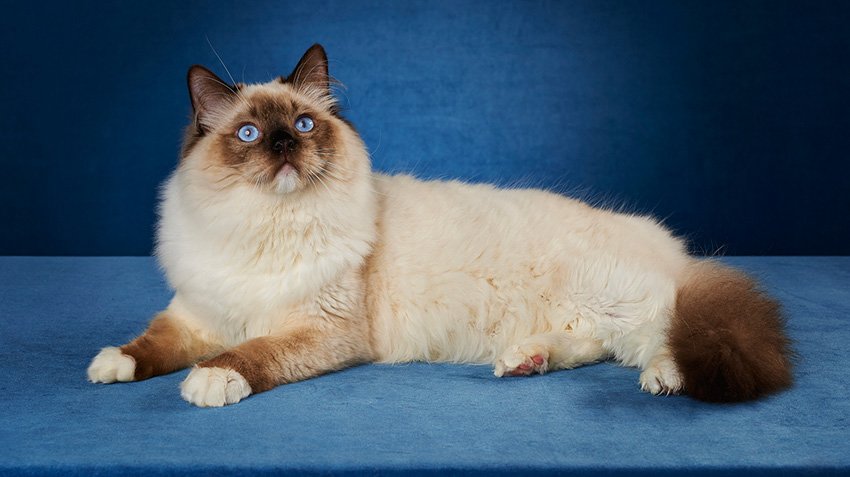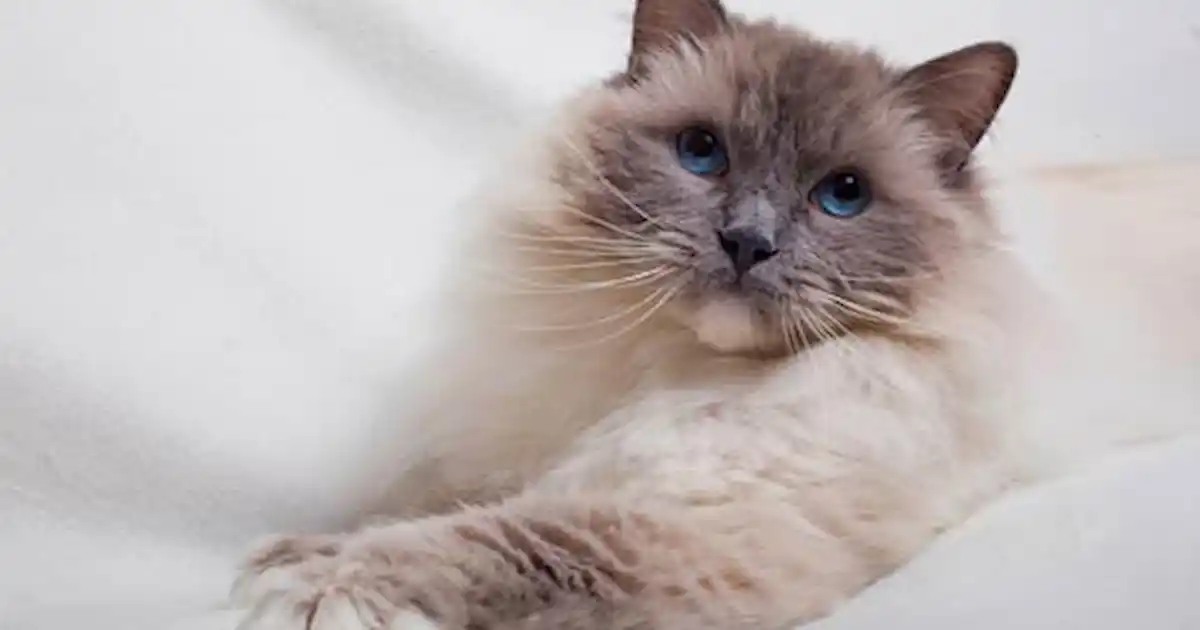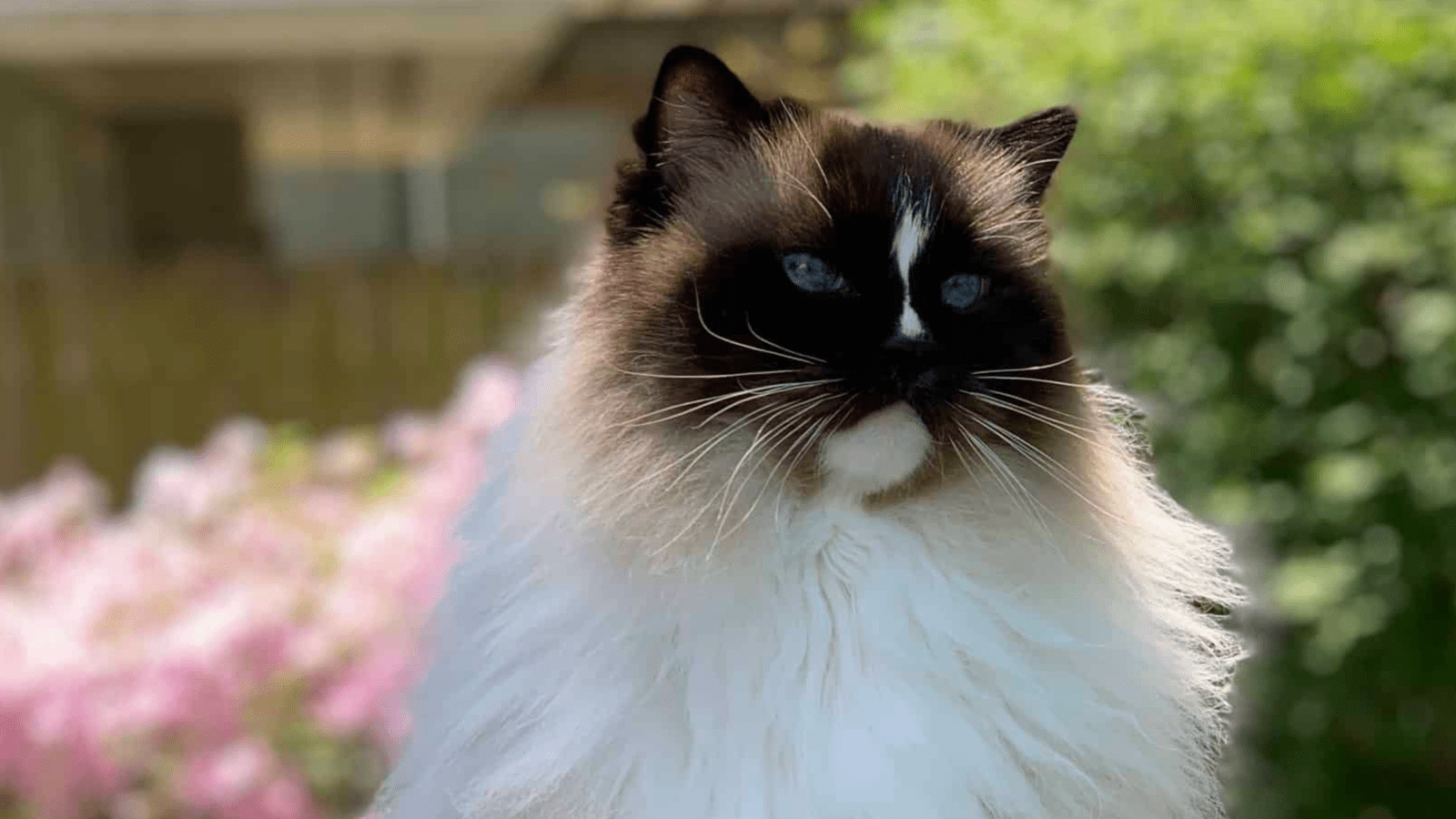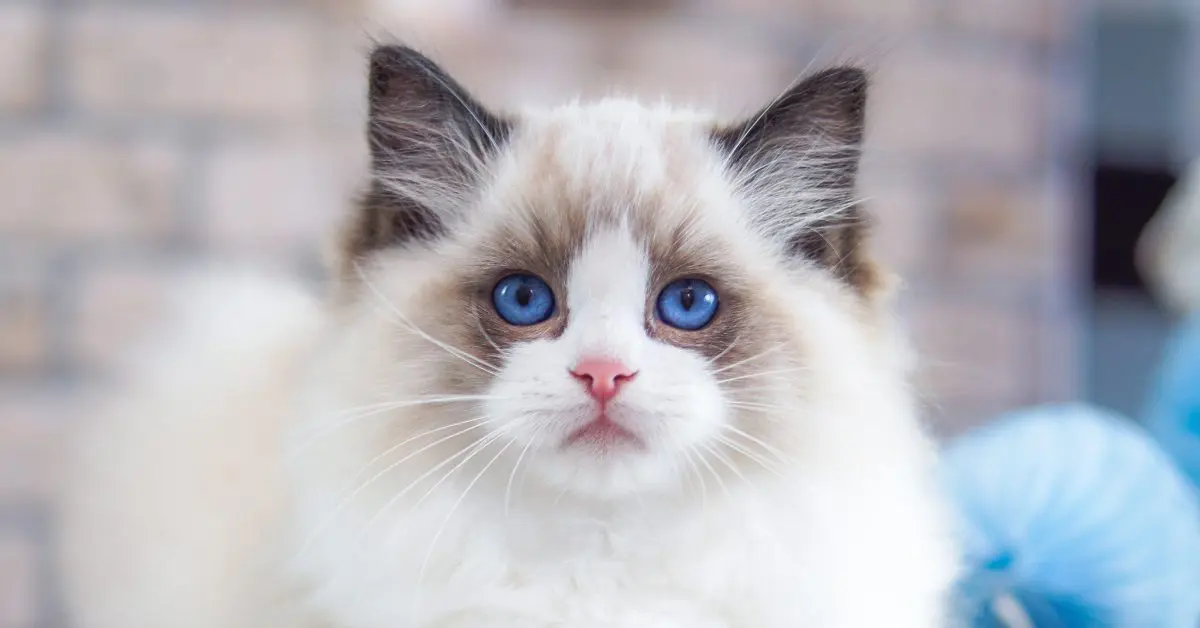Welcome to the captivating world of Ragdoll cats, where mystique meets affection in a furry package.
Delving into the history and origins of the Ragdoll breed unveils a fascinating tale of serendipity, dedication, and feline allure.
In this article, we embark on a journey through time to explore how these enchanting creatures came to be, tracing their lineage from humble beginnings to the beloved companions they are today.

1. A Chance Encounter:
The Birth of the Ragdoll
In the 1960s, a remarkable feline named Josephine, with striking blue eyes and a luscious coat, roamed the streets of Riverside, California.
Owned by Ann Baker, Josephine’s unique traits caught the attention of passersby, sparking curiosity and admiration.
One day, Josephine crossed paths with a neighbor’s Burmese-like male cat, leading to an unexpected union that would change the course of feline history forever.
2. The Genesis of the Ragdoll Name
Following Josephine’s miraculous litter, Ann Baker coined the term “Ragdoll” to describe these docile and floppy kittens.
The name perfectly captured their endearing tendency to relax and go limp when held, resembling a child’s ragdoll toy.
This defining characteristic soon became synonymous with the breed, captivating the hearts of cat enthusiasts worldwide.
3. Breeding for Temperament and Beauty
Driven by her passion for creating the perfect feline companion, Ann Baker embarked on a breeding program focused on refining the Ragdoll’s temperament and beauty.
Through careful selection and meticulous breeding practices, she aimed to preserve the breed’s gentle nature and striking appearance, laying the foundation for generations of Ragdolls to come.

4. Recognition and Popularity
As word of the Ragdoll’s irresistible charm spread, demand for these enchanting cats soared.
Recognized for their stunning blue eyes, silky fur, and affectionate demeanor, Ragdolls captured the attention of cat fanciers and breeders alike.
In 1993, the Cat Fanciers’ Association (CFA) officially recognized the Ragdoll breed, cementing its status as a beloved and prestigious pedigree.
5. The Ragdoll Today:
A Beloved Companion
Today, Ragdolls continue to enchant cat lovers with their laid-back personality and striking beauty.
Renowned for their affectionate nature and gentle demeanor, they excel as loving companions and cherished family pets.
Whether lounging on laps or engaging in playful antics, Ragdolls bring joy and companionship to households around the world, leaving an indelible mark on the hearts of those fortunate enough to share their lives.
Conclusion:
In conclusion, the history and origins of the Ragdoll breed are steeped in serendipity, passion, and devotion.
From humble beginnings to global recognition, the journey of the Ragdoll is a testament to the enduring bond between humans and cats.
As we celebrate their legacy, let us continue to cherish and honor these captivating creatures for generations to come.

FAQs:
1. Are Ragdoll cats suitable for families with children?
Absolutely! Ragdoll cats are known for their gentle and tolerant nature, making them ideal companions for families with children.
They often enjoy the company of youngsters and thrive in households with plenty of love and attention.
2. Do Ragdoll cats require a lot of grooming?
While Ragdoll cats have semi-long fur that requires regular grooming to prevent matting and tangles, they are generally low-maintenance in terms of grooming.
A weekly brushing session is usually sufficient to keep their coat looking sleek and healthy.
3. Are Ragdolls prone to any specific health issues?
Like all breeds, Ragdoll cats may be susceptible to certain health issues, including hypertrophic cardiomyopathy (a heart condition) and urinary tract problems.
However, with proper care, regular veterinary check-ups, and a healthy lifestyle, Ragdolls can lead long and healthy lives.
4. Do Ragdolls get along well with other pets?
Ragdoll cats are known for their amiable disposition and often get along well with other pets, including dogs and other cats.
Early socialization and gradual introductions can help facilitate positive relationships between Ragdolls and other furry companions.
5. What is the average lifespan of a Ragdoll cat?
Ragdoll cats typically live between 12 to 15 years on average, although some may live longer with proper care and attention to their health and well-being.
Regular veterinary care, a balanced diet, and a loving environment can contribute to a Ragdoll’s longevity and quality of life.
